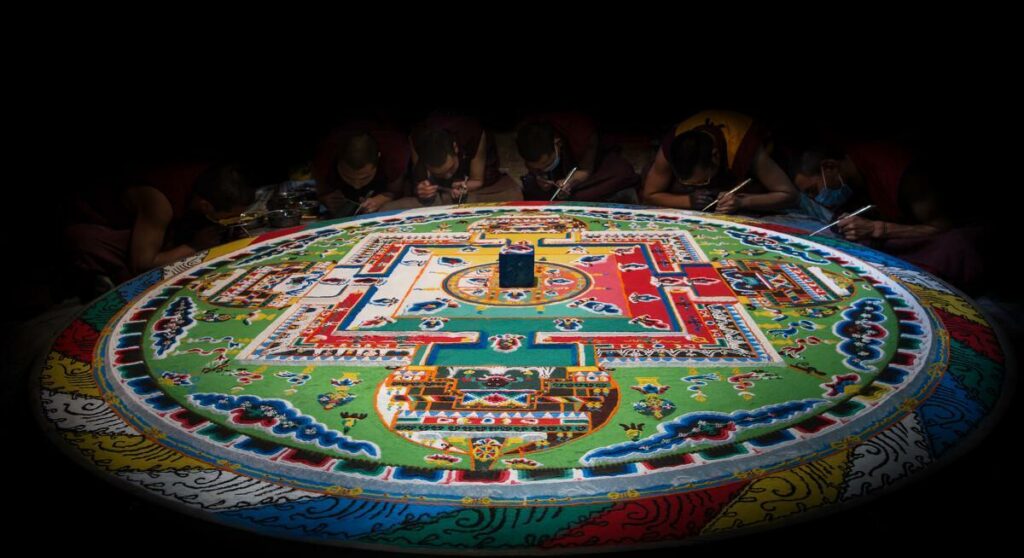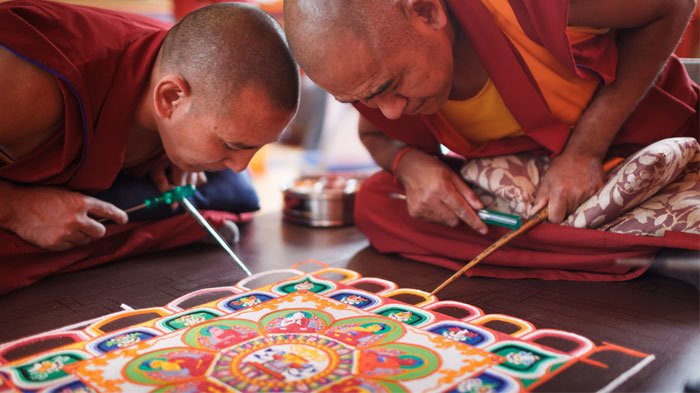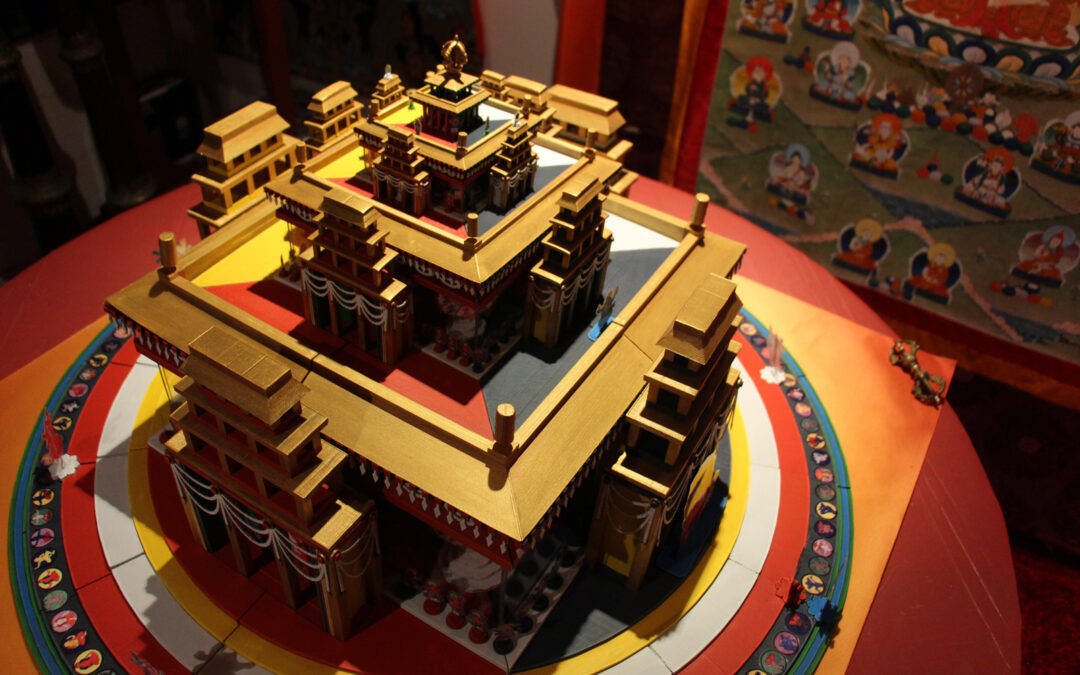This post introduces Sand Mandala Art and explores the characteristics that it shares with Building.
Sand mandala art is a beautiful process that has developed over a long period of time. The art form originated in India, and is currently practiced by Tibetan Buddhist monks. In the Buddhist tradition, the artwork is created, enjoyed, and then destroyed to exhibit the transitory nature of all things. This link provides a brief background of Tibetan sand mandalas.
Mandala art has a long and rich tradition going back to the Veda period (c.1500-1100 BCE). Mandalas are artworks that predate sand mandalas and whose sole purpose is to be experienced through the act of creation and then actively destroyed leaving no trace. Symbolizing the transitory nature of existence and the Buddhist value of non-attachment to physical things. Perhaps buildings lifespans are a bit longer, but sand mandalas are a fascinating lens though which to view buildings and the building process.

Increasingly, a greater number of people, both professionals within the building industry and consumers and users of buildings are becoming aware of the environmental costs involved in Building. For example:
- The initial mining, forestry, and transportation costs to obtain raw materials and manufacture them into products usable for constructing buildings
- The costs of erecting the building
- The costs of operating the building for its lifecycle
- And, ultimately, the cost of demolishing and/or repurposing the structure
Of course, due to various circumstances, some buildings come down in a short period of time. Others have remained in operation for hundreds of years. For the sake of this discussion, let’s use 50 years as the average lifespan for a building.
A typical building’s lifespan is relatively brief, about 62.5% of our own lifespan (50/80). No matter how well built, the life of most buildings is fleeting. Like sand mandalas, buildings are created by our investment of time, money, and resources. We need to be more considerate and thoughtful of how we invest in the process of creating and destroying these structures, and cultivate a deeper understanding of the impact of this process on our physical and natural environment. We can learn a lot from sand mandalas when it comes to expanding our ability to afford the financial, social, and energy resources required to maintain our community infrastructure and to ensure sustainability over the long haul.
- Like mandala art, buildings must be more carefully considered before executing the product. Not all buildings are equal. The appropriate scale of resources for the building’s proper operation and implementation needs to be accurately assessed.
- Like the creative process of mandala art, the process of constructing a building should nurture a respect between the creation process and the creation itself (building/artwork). In the case of artwork, it needs to provide an aesthetic structure that has beauty and significance. In the case of the building, it needs to provide a physical and social environment that supports the operational and functional purpose of the building, and offers an aesthetic that is pleasing to the occupants.
- Like sand mandalas, buildings are fleeting. The relationship of a building with its users should develop in a manner that is amenable to change over time, and that acknowledges the impermanent nature of most physical structures.
Simply put, the way buildings are created, and the relationship of the vast majority of buildings with the communities they support, should be clearly understood by all parties. The way in which a building disappears or is repurposed, whether by choice or through disaster, should be met with healthy clarity. Our physical things are useful and necessary, but temporary and replaceable. A deeper understanding of the building process will allow us to approach inevitable change with calm and equanimity.
The building experience should be exciting and enjoyable for both producers and consumers. Many building types should be self-consciously constructed with their ultimate reconfiguration or destruction (leaving no trace) in mind. Other buildings which are iconic may have a much longer lifespan. However, they too may ultimately be relegated to the dustbin of history, or disappear in the sands of time. Like sand mandalas, their transitory nature only enhances their beauty.

